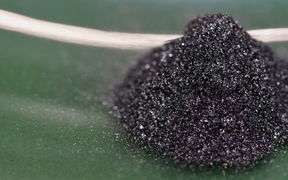Professor Jari Koskinen concludes his distinguished career
Jari Koskinen began his professorship at Aalto University (Helsinki University of Technology at the time) in 2009. Koskinen, who graduated from the Department of Physics at the University of Helsinki with a doctorate in philosophy in 1987, worked as a researcher at VTT for a long time before coming to Aalto. According to Koskinen, over a period of less than 14 years, his research direction has shifted more from the mechanical industry and manufacturing to the development of measurement methods in the health sector.
“It has been a change that I could never have predicted in the past. In the last 5 to 6 years, I have not discussed the durability of the surfaces of machine parts other than in lectures. It was my professional competence at the VTT Technical Research Centre of Finland and in some of the first projects at Aalto, but my focus has since shifted,” Koskinen says.
Koskinen's research has focused on the field of functional materials from the early 1990s already, when he worked at the VTT Technical Research Centre of Finland. In addition to their main, or familiar, purposes, materials can have other functionalities. For example, they can monitor their environment or adapt to it.
“In the functionalisation of material, it is possible to obtain properties from the material that it did not originally have by combining different properties and nanomaterials. That has been my focus in research for a long time, and it continues to be important here at Aalto.”
Co-operation across university and faculty boundaries
When asked about significant projects, Koskinen first highlights co-operation projects with other professors. Co-operation with Professor Tomi Laurila from the School of Electrical Engineering began immediately at the beginning of Koskinen's time at Aalto, and has continued systematically until these days.
“We have studied the use of carbon nanomaterials in electrochemical measurements. Our collaboration has been close and has included several projects over the years. Together with Tomi, we have managed to find openings around nanocellulose research, which has been one of the biggest research focuses of the School of Chemical Engineering,” says Koskinen.
Also, significant has been the continued research on thin films and the development of teaching with Professor Sami Franssila of the School of Chemical Engineering, as well as the constructive co-operation of Koskinen and Laurila with Eija Kalso, Professor of Pain Medicine at the University of Helsinki.
The key is enthusiasm for research and the ability to form alliances
When retiring, Koskinen will become Emeritus Professor at Aalto University. Koskinen will continue to work in both research and teaching for at least the next year, before the reform of the master's programmes in chemical technology begins in the spring of 2024.
"I'm going to continue to provide my expertise and support for the students from the Tomi Laurila group, for example. Tomi is also, by our mutual agreement, a Professor of CHEM and he gets to guide and lead our school's projects as well. We have built these kinds of internal links here within Aalto, which should be done more and more,” Koskinen says.
According to Koskinen, the most important things for a young researcher are a passion for research work and utilising one's own expertise. On the other hand, it is also essential to identify areas where one can benefit from alliances with other researchers.
“When your expertise in a certain matter is well-established and you know how to ask for help from elsewhere, then you start produce results. For example, I have not written graduate student publications, instead I have required that this skill be developed during graduate studies. It has worked well, and my students have been able to do it. Of course, one needs to read and write a lot of publications so that one can develop their skills.”
For Koskinen, classical music is the other half of him.
In addition to his career, Koskinen is also an active musician and has played violin in the Kirkkonummi Chamber Orchestra for over 30 years. During his time at VTT, Koskinen also played in the Polytech Orchestra for five years and has been a member of the board of the Finnish Chamber Music Society for a long time.
“In the postdoctoral period, I spent a couple of years at the Cornell University, at the Department of Material Science and Technology, where I learned more about the engineering approach to material science. But it was only in Polytech Orchestra that I was introduced to the culture of celebrating like technology students, through music. I also met my wife at the student orchestra.”
Like being a researcher and the head of department, the role of a musician also essentially involves getting along with different people and listening to others.
"Music is not about playing in my own corner, but about doing things with others. I once thought in my early adulthood that I would become a professional musician, but luckily I ended up completing my university physics studies. But music is the other half of me, and I will continue to dedicate a lot of time to it,” Koskinen says.
Physical Characteristics of Surfaces and Interfaces
Research group led by Professor Jari Koskinen

- Published:
- Updated:
Read more news

DeployAI Partners Gather for Heart Beat Meeting in Helsinki
The European DeployAI project's partners gathered for the Heart Beat meeting hosted by Aalto University Executive Education in Helsinki.
Get to know us: Associate Professor Maria Sammalkorpi
Sammalkorpi received her doctorate from Helsinki University of Technology 2004. After her defence, she has worked as a researcher at the Universities of Princeton, Yale and Aalto.
Aalto computer scientists in ICML 2024
Computer scientists in ICML 2024